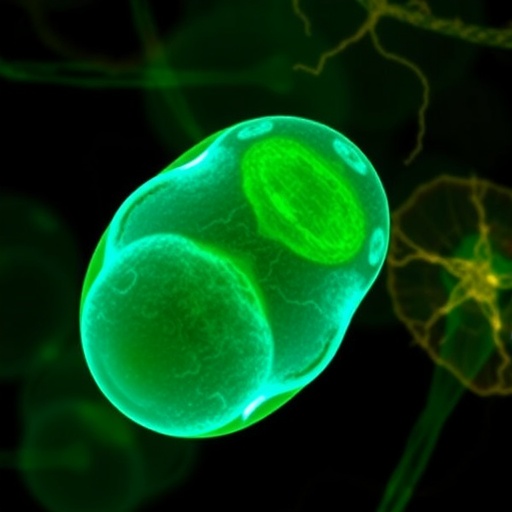In recent years, the intersection of obesity and female fertility has emerged as a critical area of biomedical research, unveiling complex biochemical pathways that disrupt reproductive success. Among the various molecular factors implicated, palmitic acid (PA), a long-chain saturated fatty acid, has garnered attention due to its elevated presence in the follicular fluid of women with obesity. This accumulation of PA within the ovarian microenvironment is increasingly linked to impaired oocyte quality and compromised fertility outcomes. Yet, despite these associations, the precise mechanisms through which PA exerts deleterious effects on oocyte development have remained elusive, thereby presenting a significant barrier to the development of targeted therapies.
A groundbreaking study now sheds light on how PA exposure precipitates defects in oocyte meiosis, the specialized cell division essential for generating viable female gametes. The research illuminates a critical axis involving mitochondrial dysfunction as the key mediator of PA-induced meiotic arrest. Mitochondria, often characterized as the cellular powerhouses, are indispensable for energy production and the orchestration of crucial signaling cascades during oocyte maturation. This investigation elucidates how PA disrupts mitochondrial integrity and function, thereby undermining the competency of oocytes to complete meiosis efficiently.
Delving deeper into the mitochondrial pathology, the study reveals that PA exposure instigates aberrations in mitochondrial membrane potential and bioenergetic capacity. These disturbances manifest as impaired ATP synthesis—the molecular currency of energy in cells—and heightened generation of reactive oxygen species (ROS), which together foster a milieu of oxidative stress within the oocyte. This oxidative burden is particularly detrimental, given the oocyte’s sensitivity to redox imbalances, culminating in chromosomal misalignment and spindle assembly defects that ultimately thwart successful meiotic progression.
What makes these findings especially compelling is the researchers’ identification of a pharmacological agent capable of mitigating PA-induced mitochondrial derangements. Agomelatine, a well-known melatonergic antidepressant, displayed a remarkable capacity to restore mitochondrial function in mouse oocytes challenged with PA. Through a mechanism that appears to converge on mitochondrial biogenesis and the stabilization of membrane potential, agomelatine ameliorated the physiological disruptions imposed by PA. This therapeutic effect translated into the correction of meiotic abnormalities, effectively rescuing oocyte maturation in the experimental models.
The implications of agomelatine’s mitochondrial protective properties extend beyond its psychiatric applications, suggesting a novel repurposing avenue for fertility preservation in the context of metabolic dysfunction. By bolstering mitochondrial resilience, agomelatine counters the bioenergetic deficits induced by lipid overload, thereby reinstating the cellular environment necessary for faithful meiotic execution. This repositioning of a psychiatric drug holds promise for innovative fertility treatments tailored to women suffering from obesity-associated reproductive challenges.
Further mechanistic insights from the study underscore the pivotal role of mitochondrial dynamics, including the balance between fusion and fission processes, in maintaining oocyte quality under metabolic stress. PA disrupts this equilibrium, favoring fragmented and dysfunctional mitochondria that are prone to eliciting apoptotic pathways. Agomelatine’s restorative effect involves the normalization of these dynamics, enabling the preservation of mitochondrial networks that underpin oocyte developmental competence.
Complementing these mitochondrial findings are observations related to intracellular calcium homeostasis, an essential regulator of meiotic spindle formation and chromosome segregation. PA-induced mitochondrial impairment perturbs calcium signaling, exacerbating meiotic defects. Agomelatine’s intervention appears to stabilize calcium fluxes, further contributing to the maintenance of cytoskeletal integrity during meiosis.
This research heralds a paradigm shift in understanding how metabolic derangements translate into reproductive dysfunction, positioning mitochondrial health at the nexus of fertility regulation. It challenges prior conceptions that solely focused on systemic metabolic markers by emphasizing localized lipid toxicity within the ovarian follicle and its direct impact on gamete quality.
Moreover, the study raises important questions regarding the potential for lifestyle and dietary interventions to modulate follicular lipid profiles and mitochondrial function. While pharmacological rescue with agents like agomelatine is promising, a holistic approach addressing the root causes of lipid excess may be indispensable for comprehensive fertility management in obese populations.
Critically, the murine model utilized in this investigation provides a translatable platform to unravel intricate molecular cascades, although future clinical trials will be essential to ascertain agomelatine’s safety, dosing, and efficacy in human reproductive medicine. The intricacy of human oocyte maturation, coupled with interindividual variability in metabolic status, necessitates cautious optimism and rigorous validation.
Beyond fertility, these findings resonate with a broader spectrum of mitochondrial pathologies linked to metabolic syndrome, reinforcing the mitochondrion as a therapeutic target in diverse diseases exacerbated by lipid dysregulation. The study also prompts renewed scrutiny of other saturated fatty acids present in the follicular fluid and their cumulative effects on oocyte physiology.
Innovatively, the research methodology combined advanced imaging techniques to monitor mitochondrial membrane potential alongside biochemical assays of ATP production and ROS quantification. This multimodal approach facilitated a nuanced understanding of the temporal progression of PA toxicity and therapeutic rescue, enabling the delineation of key intervention windows during oocyte maturation.
In sum, this pioneering investigation explicates a mechanistic pathway by which palmitic acid compromises oocyte quality through mitochondrial dysfunction, while simultaneously unveiling agomelatine as a potent therapeutic candidate to counteract these defects. These revelations hold transformative potential for addressing fertility impairments in women grappling with obesity, opening new frontiers in reproductive medicine that harness mitochondrial modulation.
As obesity rates continue to escalate globally, the burden of related fertility issues intensifies, underscoring an urgent need for innovative solutions. This research stands at the forefront of such endeavors, marrying metabolic biology with reproductive science to deliver hope for millions of women worldwide striving to conceive in the face of metabolic adversity.
Subject of Research: Mechanisms underlying palmitic acid-induced oocyte meiosis defects and therapeutic intervention with agomelatine
Article Title: Agomelatine alleviates palmitic acid-induced mouse oocyte meiosis defects by restoring mitochondrial function
Article References:
Zhao, R., Tang, Y., Zhang, Y. et al. Agomelatine alleviates palmitic acid-induced mouse oocyte meiosis defects by restoring mitochondrial function. Int J Obes (2025). https://doi.org/10.1038/s41366-025-01825-2
Image Credits: AI Generated




